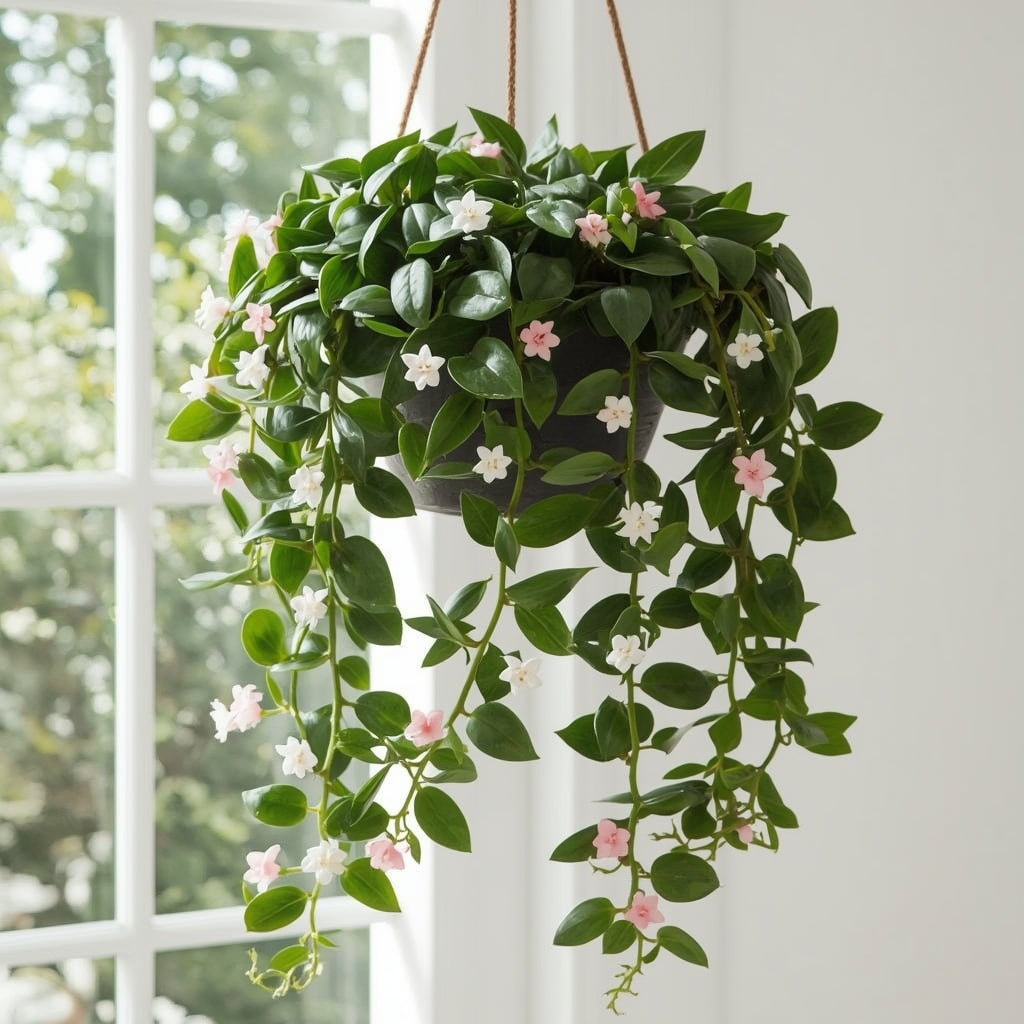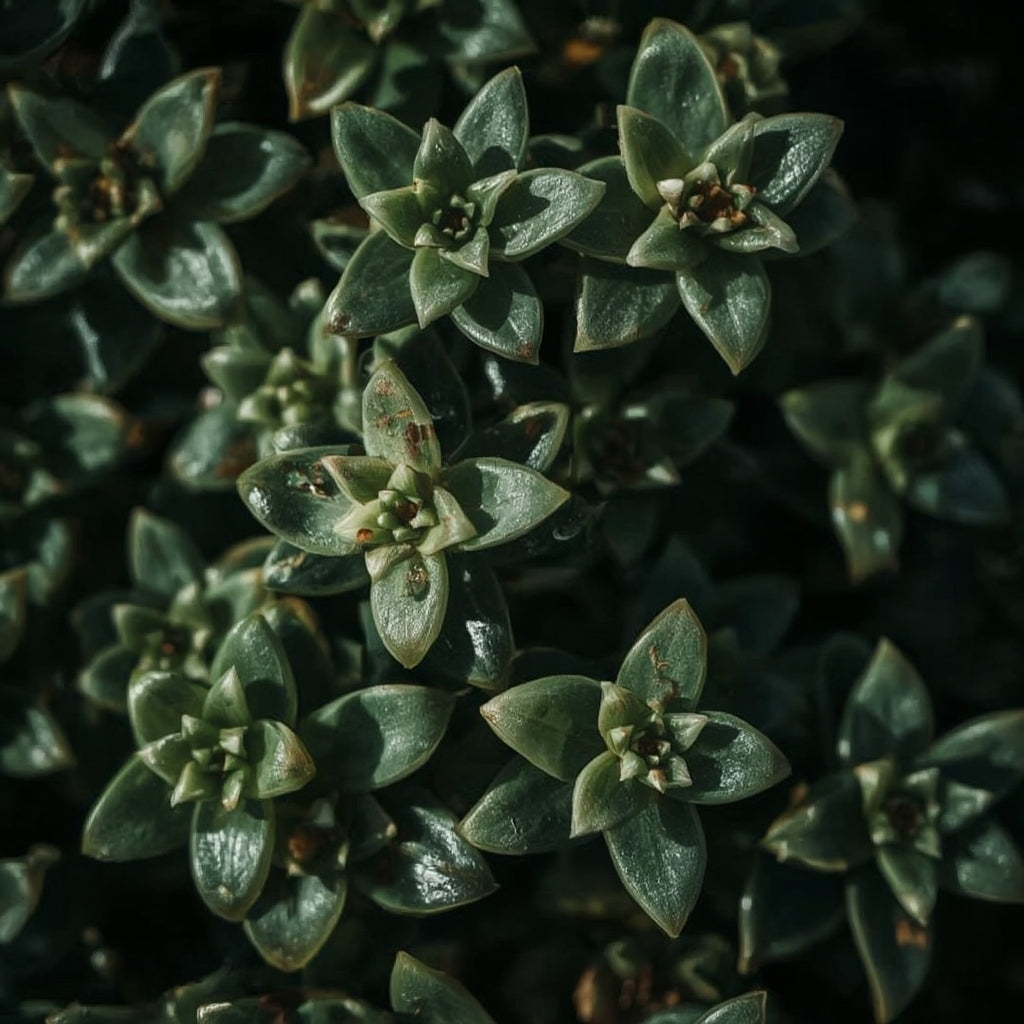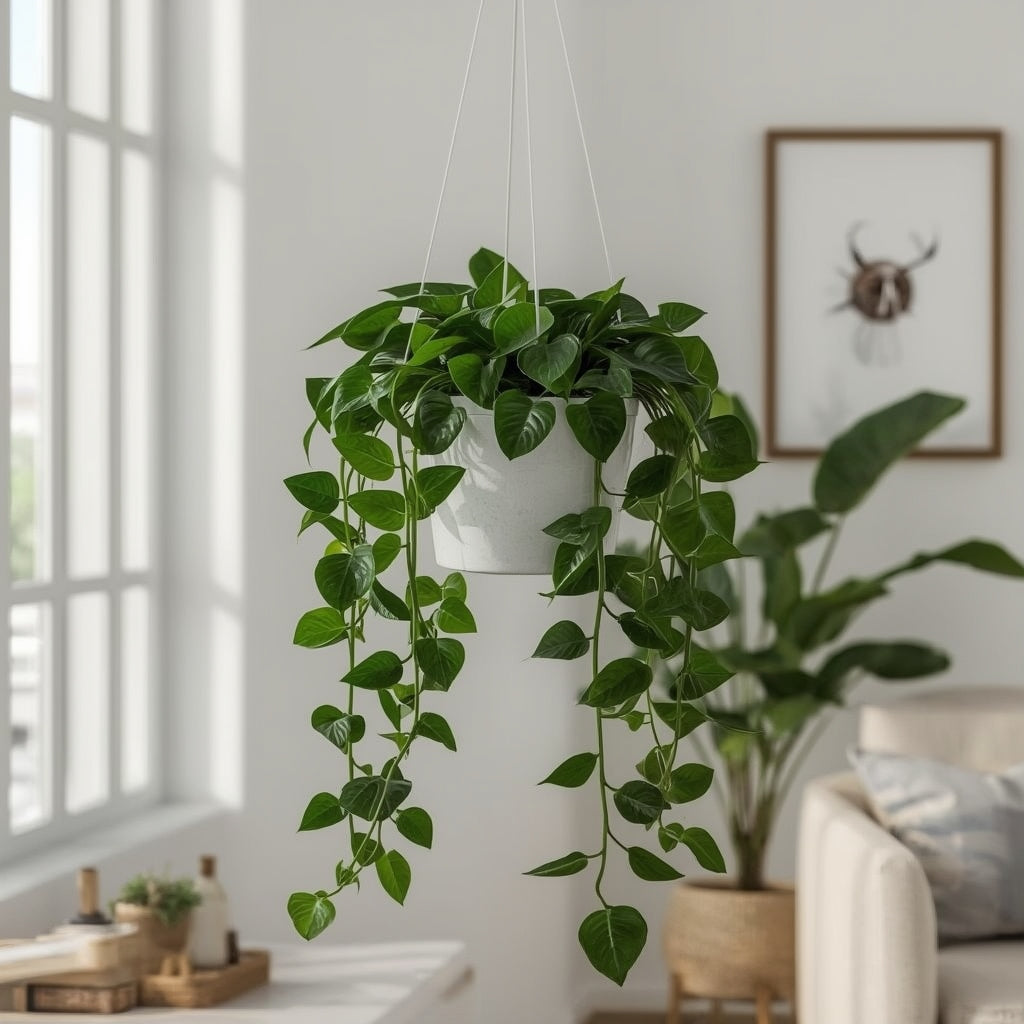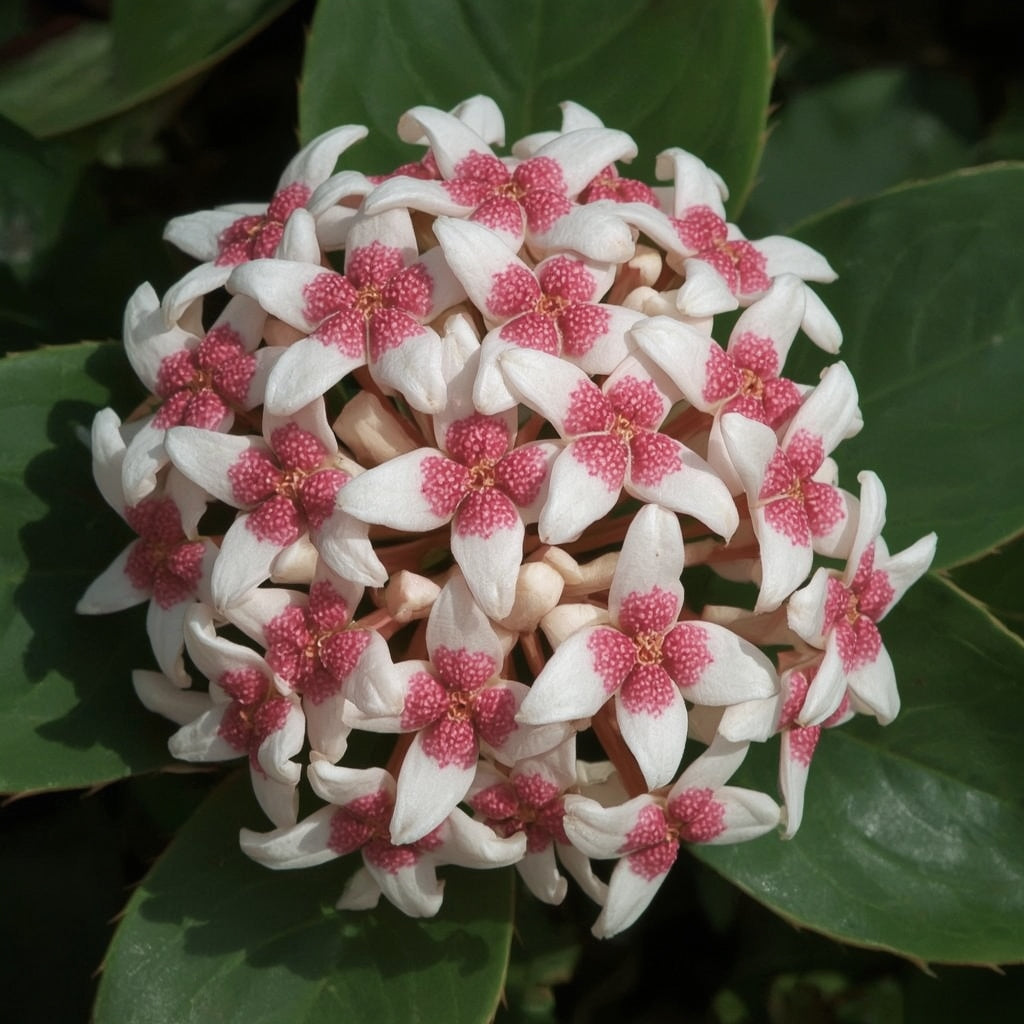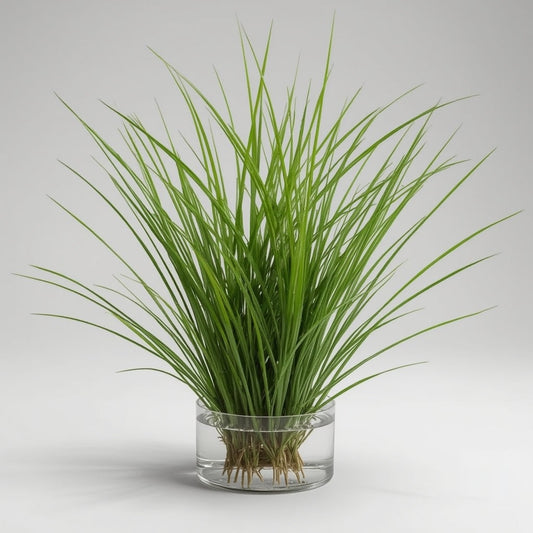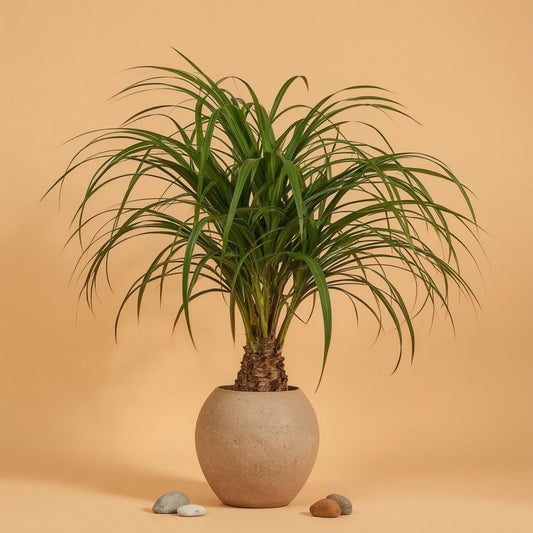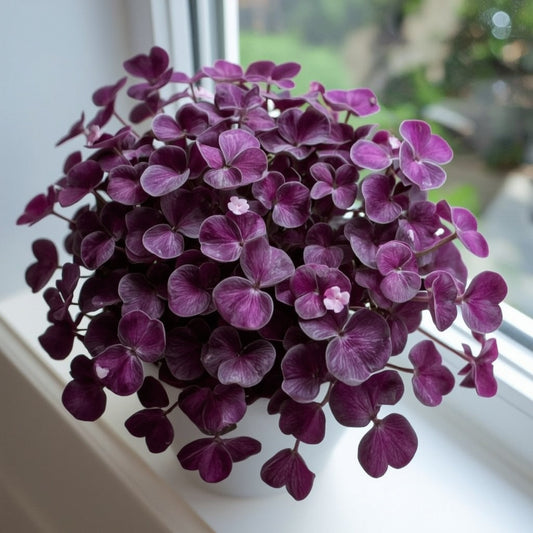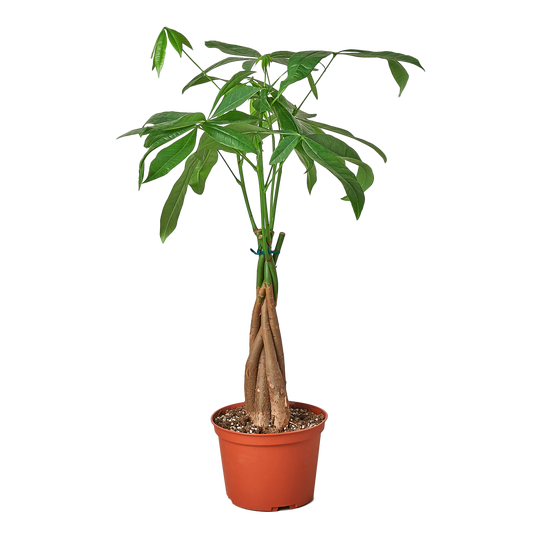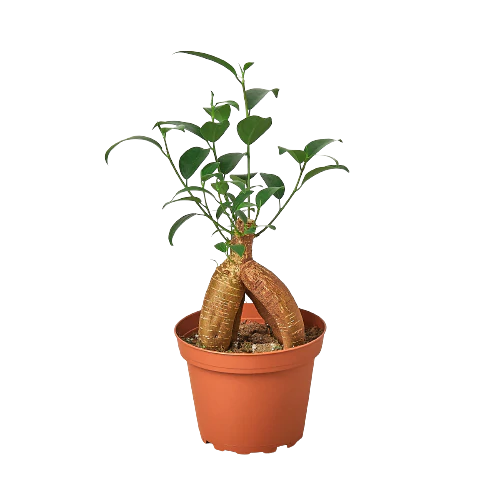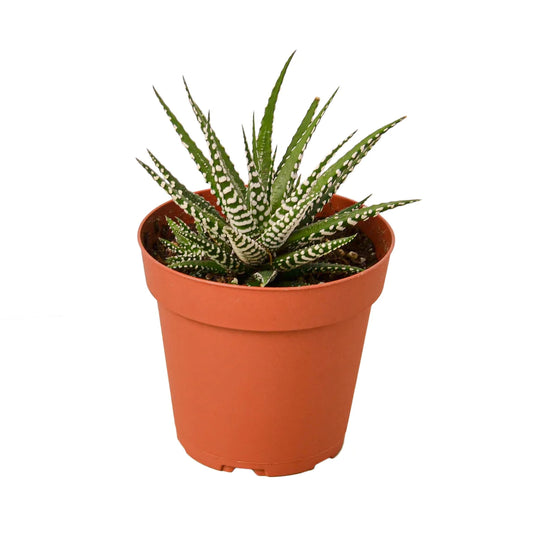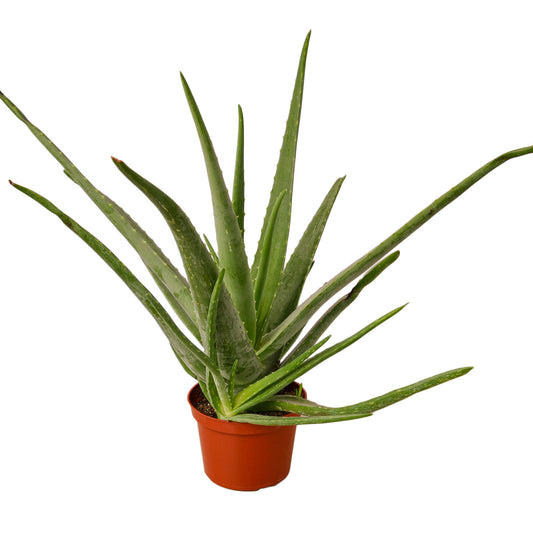Hoya (Wax Plant): Trailing Vines with Star-Shaped Blooms
Plant Care Summary
Light
Bright, indirect light; can tolerate some direct morning sun.
Water
Allow soil to dry between waterings; water deeply then drain.
Humidity
Average household humidity; higher humidity encourages blooming.
Temperature
65–80°F (18–27°C), enjoys warmth for best growth.
Fun Facts
Patience pays
Hoyas may take 2-3 years to mature enough to bloom, but it's worth the wait.
Flower power
Blooms emerge from the same peduncles year after year—never cut them off!
Collector's dream
With 200+ species, Hoya collecting can become a lifelong passion.
Sweet scent
Many varieties produce honey-scented flowers, especially fragrant at night.
Sad Plant Signs
Yellowing leaves
Usually caused by overwatering or poor drainage.
No blooms
May need more light, maturity, or slightly root-bound conditions.
Shriveled leaves
Sign of severe underwatering; water thoroughly and regularly.
Dropping leaves
Often due to sudden temperature changes or overwatering.

